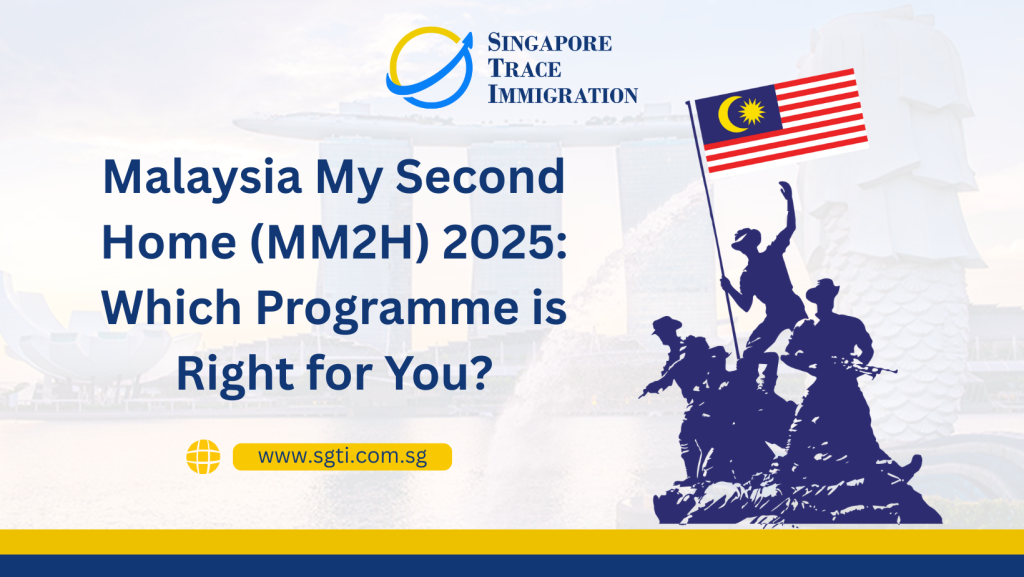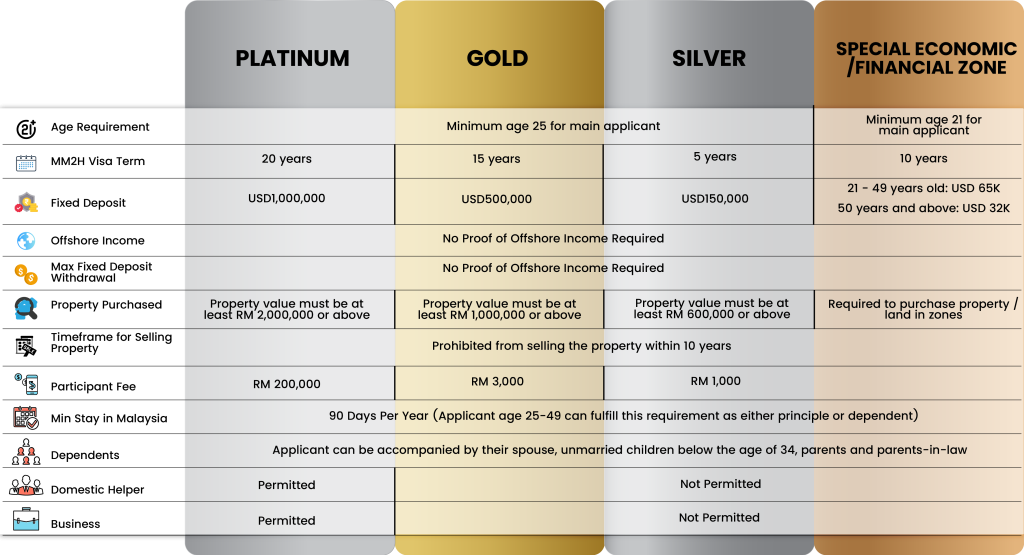
The Malaysia My Second Home (MM2H) programme is a long-term visa initiative designed to attract foreign nationals to live, invest, and retire in Malaysia. Relaunched in 2024 with major updates, the programme now offers three-tiered options that accommodate different income levels and lifestyle needs.
Whether you’re a retiree, a digital nomad, or a high-net-worth individual, this guide breaks down the latest MM2H requirements, benefits, and application process to help you make an informed decision.
🔍 What Is MM2H?
Launched in 2002, MM2H offers a renewable, multiple-entry visa that enables eligible foreigners to stay in Malaysia for extended periods. The programme supports Malaysia’s goals of boosting tourism, real estate, and foreign investment while offering expats a high quality of life in Southeast Asia.
🧾 MM2H 2024/2025: Key Changes at a Glance
Malaysia’s MM2H scheme has undergone major reforms to increase flexibility and attract a wider range of applicants. Key updates include:
- Three-tier visa structure (Platinum, Gold, Silver)
- No offshore income requirement
- Expanded dependent eligibility
- Mandatory property purchase
- Special Economic Zone option for lower-income applicants over 50
🏦 MM2H Three-Tier Visa Structure (Effective 2024)

👥 Who Can You Bring?
The MM2H programme now allows broader dependent coverage:
- Spouse
- Unmarried children aged 21–34
- Parents and parents-in-law
💰 Other Financial Requirements Removed
MM2H no longer requires proof of:
- RM 1.5 million in liquid assets
- RM 40,000 monthly offshore income
This change makes the programme more accessible to a wider group of applicants, including retirees and digital nomads.
🌍 Affordable Option: MM2H via Special Economic/Financial Zones
For those over 50 seeking a lower-cost entry into Malaysia, there’s an alternative MM2H route via designated zones (e.g. Forest City in Johor Bahru).
Highlights:
- Fixed Deposit: USD 32,000 (≈ RM 151,000)
- Property Requirement: Within 1 year, buy property in designated zones (min. RM 320,000)
- Annual Interest Returns: 3.5%–3.8%
- Visa Duration: 5 years, renewable
💼 Application Process (Step-by-Step)
- Engage a licensed MM2H agent (as required by the Ministry of Tourism, Arts and Culture – MOTAC)
- Submit documents (passport, police clearance, medical report, etc.)
- Await approval (~3–4 months)
- Open a Malaysian bank account and deposit required funds
- Purchase property (if applicable within a year)
- Receive visa endorsement
⚖️ Pros & Cons of MM2H
✅ Benefits
- Long-term stay (5–20 years)
- No tax on offshore income
- Access to excellent healthcare
- Affordable living with expat-friendly cities
- Family-inclusive visa
❌ Limitations
- Mandatory property purchase (not ideal for those who prefer to rent)
- High participation fee for Platinum tier
- Property must be held for 10 years, even for 5-year Silver tier holders
🗞️ Is MM2H the Right Fit for You?
MM2H’s refreshed structure targets a more diverse applicant base—from affluent investors to cost-conscious retirees. The three-tier model offers clear options based on financial capacity, while the economic zone pathway ensures inclusivity.
However, note that this programme applies only to West Malaysia (Peninsular). Sabah and Sarawak operate separate MM2H schemes with different requirements.
📌 Final Thoughts
Malaysia remains one of Asia’s top destinations for long-term residency. With greater flexibility, broader eligibility, and clearer investment structures, the 2024 MM2H programme aims to regain momentum and offer a balanced approach between national interest and expat needs.
If you’re exploring second-home or retirement options in Southeast Asia, MM2H is worth a serious look—whether through the standard visa tiers or the economic zone alternative.
Book a free consultation today to explore your best route into Malaysia under the new MM2H 2025 programme.


